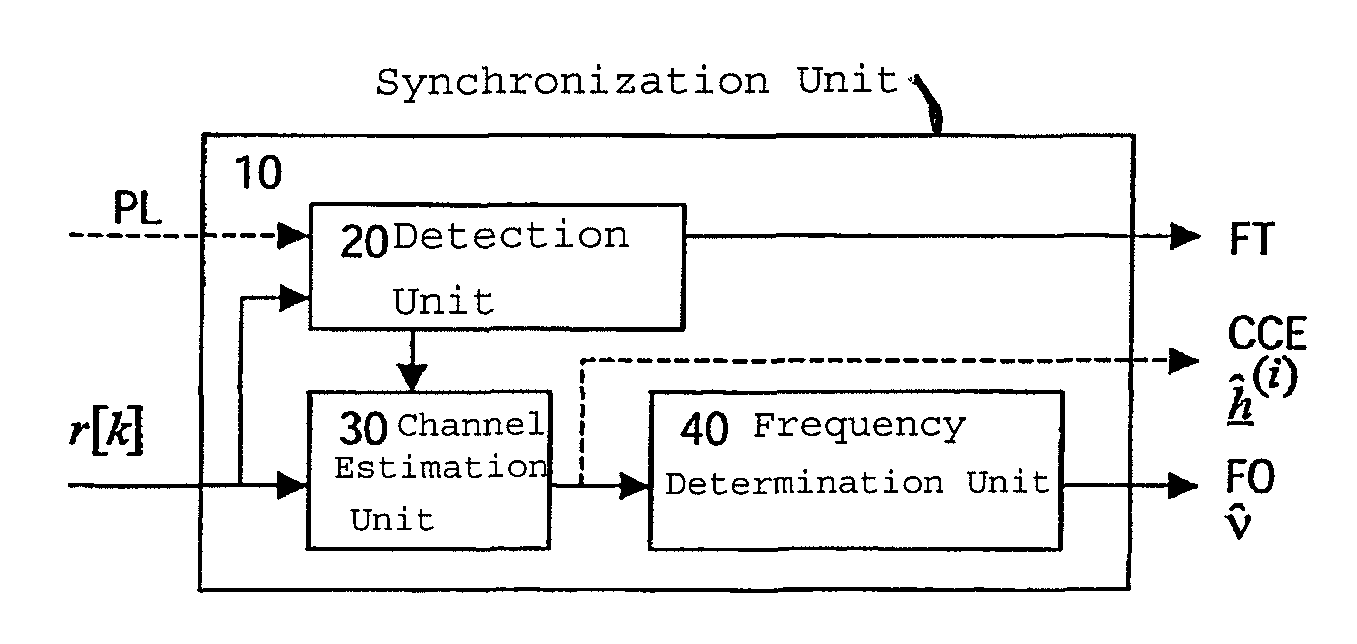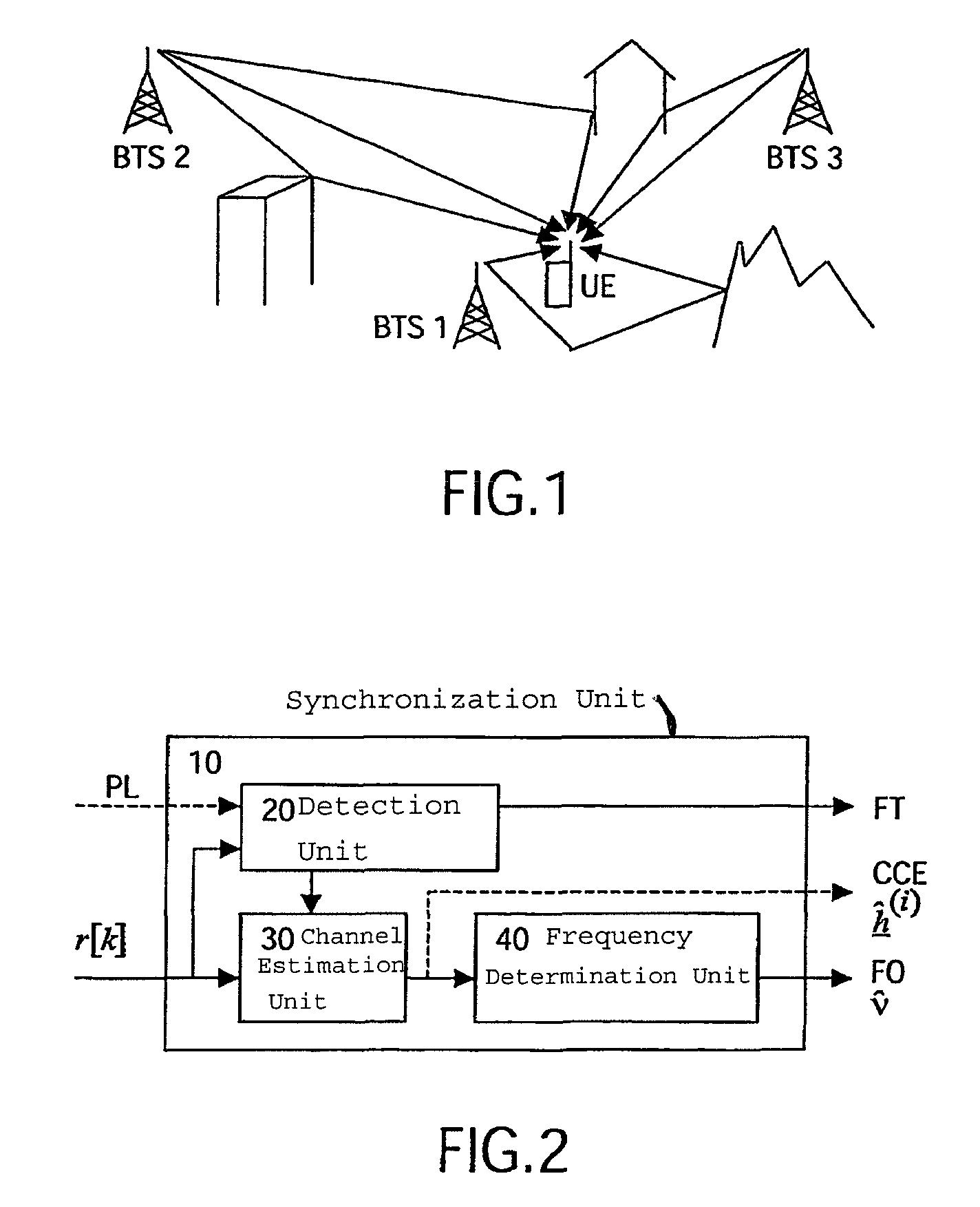Initial synchronization for receivers
a receiver and initial synchronization technology, applied in the field of initial synchronization for receivers, can solve problems such as increased signal-to-interference ratio
- Summary
- Abstract
- Description
- Claims
- Application Information
AI Technical Summary
Benefits of technology
Problems solved by technology
Method used
Image
Examples
Embodiment Construction
[0029]The preferred embodiment will now be described on the basis of a power-efficient UE receiver unit with frequency-efficient reuse-one capability for a CDMA system with frame-synchronous cellular deployment of intra-frequency BTSs. The proposed robust synchronization scheme enables the UE's synchronization unit to deal with the frequency-efficient reuse-equal-to-one case. In particular, a robust frequency and start-of-block estimator will be described which improves and accelerates initial cell search and synchronization of the UE in cellular mobile communications according to the TD-SCDMA or TSM standard. The training sequence to be exploited by both schemes is standardized for TD-SCDMA, e.g. low chip rate TDD option as defined in the 3GPP specification TS 25.223: Universal Mobile Communications System (UMTS); Spreading and Modulation (TDD), or for TSM systems in the China Wireless Telecommunication Standard (CWTS) specification TSM 05.02: 3G Cellular Telecommunications System;...
PUM
 Login to View More
Login to View More Abstract
Description
Claims
Application Information
 Login to View More
Login to View More - R&D
- Intellectual Property
- Life Sciences
- Materials
- Tech Scout
- Unparalleled Data Quality
- Higher Quality Content
- 60% Fewer Hallucinations
Browse by: Latest US Patents, China's latest patents, Technical Efficacy Thesaurus, Application Domain, Technology Topic, Popular Technical Reports.
© 2025 PatSnap. All rights reserved.Legal|Privacy policy|Modern Slavery Act Transparency Statement|Sitemap|About US| Contact US: help@patsnap.com



